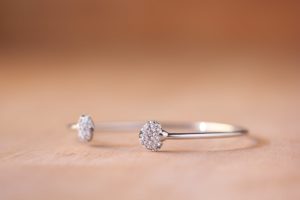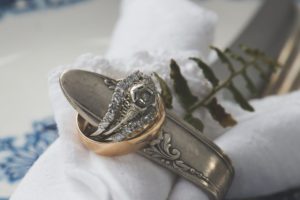 While shaping a diamond, a style or design guide is used, this is known as a diamond cut. It does not refer to any shape; instead it’s the symmetry, proportion, and polish of a diamond. If the cut of the diamond is poor then the effect would directly impact its luminosity; also while choosing the cut, the shape and size of the crystal must be taken into consideration.
While shaping a diamond, a style or design guide is used, this is known as a diamond cut. It does not refer to any shape; instead it’s the symmetry, proportion, and polish of a diamond. If the cut of the diamond is poor then the effect would directly impact its luminosity; also while choosing the cut, the shape and size of the crystal must be taken into consideration.
It consists of a symmetrical arrangement of facets which modify the shape and appearance of a diamond crystal. The two important aspects of the cut are the polish and the symmetry. The smoothness of the facets depends on the polish; and the alignment of the facets make the symmetry. If the polish is not up to the mark then the facet is dulled and would create a blurred sparkle. In the case of symmetry being poor, the light would be misdirected when it enters and exits the diamond.
There are five types of diamond cuts such as the modified brilliants, round brilliant, mixed cut, step cut, and rose cut.
- The modified brilliant is the modified version of Round Brilliant. It can be modified into various shapes because the facet counts and facet arrangements are the same; it is also the most saleable as compared to other cuts. It includes cuts such as marquise, heart, triangular trillion, oval, and the pear or drop cuts.
- The most popular cut is the round brilliant cut and the choice of many because of its elegance and simplicity; as the name suggests it has a circle cut diamond.
- The mixed cut is a combination of both Modified Brilliant and Step cut; it combines the weight preservation and dimensions of step cuts and the optical effects of the brilliant-cut. The princess cut is the most popular Mixed cut and is a commercial hit as well.
- The step cuts are the cuts where the stone is either square or rectangular. The facets of these cuts are rectilinear and are arranged parallel to the girdle.
- The rose cut has a flat base and a crown consisting of triangular facets in a symmetrical arrangement.
Different types of diamond shapes are available such as round, oval, and cushion shapes; Princess, Emerald, Asscher Diamond Shapes; Marquise and Radiant Diamond Shapes; Pear and Heart Diamond Shapes and so on.

 How many colors of diamond do you know? Do you know that diamonds have a lot of colors? Most of the rare colors are much pricier than the other colors. If you want to know some tips in evaluating a diamond color, keep reading.
How many colors of diamond do you know? Do you know that diamonds have a lot of colors? Most of the rare colors are much pricier than the other colors. If you want to know some tips in evaluating a diamond color, keep reading.